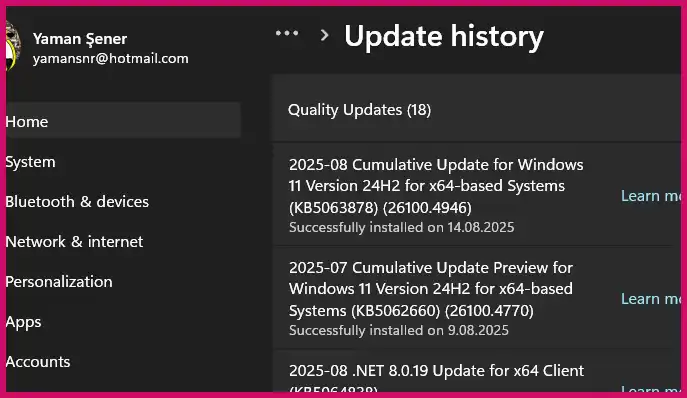It’s a scenario I’ve seen countless times after a “Patch Tuesday” update: you turn on your laptop, and suddenly your Wi-Fi, Bluetooth, or even your keyboard stops working. You did the right thing by identifying the recently installed update (like KB5063878) and uninstalling it to get your hardware functioning again. The problem is, Windows loves to automatically reinstall updates, so you risk breaking your system every time you turn it on.
Table of Contents
How to Fix
You’re not alone; recent cumulative updates have been known to cause these exact driver issues for many users. Here is a safe, step-by-step plan I’ve put together to help you block the faulty update and apply a more permanent fix.
Step 1: Immediately Block the Problematic Update
Your first priority is to prevent Windows from automatically reinstalling the update that caused the problem. You can do this in two ways.
- Pause All Updates (Temporary Fix): This is the quickest way to buy yourself some time.
- Go to Settings > Windows Update.
- Click Pause updates and choose to pause for at least 7 days. You can repeat this action if needed.
- Hide the Specific Update (Recommended Fix): This is a more targeted approach that blocks only the single faulty update.
- Download Microsoft’s official “Show or hide updates” troubleshooter tool (
wushowhide.diagcab). - Run the tool and follow the prompts to “hide” the specific update (e.g., KB5063878). This will prevent Windows Update from trying to install it again until you choose to unhide it.
- Download Microsoft’s official “Show or hide updates” troubleshooter tool (
Step 2: Update Your Drivers from the Manufacturer
In my experience, these issues often happen when a Windows Update conflicts with the generic hardware drivers that Windows installs by default. The most reliable long-term solution is to install the official drivers provided by your laptop’s manufacturer.
- Go to the official support website for your laptop’s brand (e.g., Dell, HP, Lenovo, or Microsoft for a Surface device).
- Find the drivers and support page for your specific model (e.g., “Surface Laptop 2 drivers”).
- Download and install the latest drivers, especially for Wi-Fi, Bluetooth, and chipset.
- Restart your computer after the drivers are installed. Often, these official drivers are designed to be compatible with the latest Windows updates and can prevent the conflict from happening. For more details, you can see our guide on how to properly update device drivers.
Step 3: Run System Repair Tools
Sometimes, a faulty update can expose or cause underlying corruption in your Windows system files. Running built-in repair tools is a safe and effective way to fix this.
- Right-click the Start button and select Windows Terminal (Admin) or PowerShell (Admin).
- Run the System File Checker (SFC) command and press Enter:PowerShell
sfc /scannow - After it finishes, run the DISM (Deployment Image Servicing and Management) command:PowerShell
DISM /Online /Cleanup-Image /RestoreHealth - Restart your PC once the process is complete.
What to Do Next
After you’ve blocked the update and installed the latest manufacturer drivers, you are in a much safer position. You can either keep the problematic update hidden and wait for Microsoft to release a new, corrected patch next month, or you can unhide the update and try installing it again to see if the new drivers have fixed the issue. If you continue to experience problems, it’s best to consult a guide on how to fix Windows 11 update installation failures.
More Topics
- Windows 11: Why You Can’t See Your Microsoft Account Password
- How to Fix a Video Stream That Won’t Play on Your PC (But Works on Your Phone)
- Windows 11 & 10: How to Fix Network Sharing and “Enter Network Credentials” Errors
- Windows 11 – How to Fix PIN Setup Not Working
- Windows 11 – How to Monitor Your PC’s RAM
- Windows 11 – How to Use the New Quick Machine Recovery Feature
- How to Fix Slow BIOS Load Times and PC Crashing

